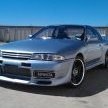The Great Dyno E-Doodle debate
Announcements
-
Similar Content
-
Latest Posts
-
By Celticsfan03 · Posted
Hey everyone. Is there a way I can get the original window sticker (maroney label) for my 1995 R33 GTST? I doubt I’ll be able to ever get it but it’s worth a shot to ask -
It was a great, but typical track day, and some VB was ingested at the night time debrief 🤪
-
And so, to round this out, I couldn't be happier to confirm @MBS206 has decided to buy the car. He drove down from sunny QLD with a trailer last week and it is off to its new home today. I'll let Matt confirm on next steps but I understand broadly that the plan is to leave it pretty much as is, and just get some quality wheel time with a nicely balanced car that is pretty much track ready. There are a few a jobs still to be done first but nothing too major and I think its a very smart buy Dinner last night at the Paragon with a round of VBs (mostly) for Neil
-
Well, 50 pages and the end of a chapter for this car. We took it out for a shakedown at Wakie yesterday, and everything went well. There were a couple of niggles: - Oil cooler fitting leak - tightened, cleaned, stopped leaking - Radiator cap overflow fitting was leaking....Mark called it, the overflow fitting was threaded in and not tight....tightened, tested and held pressure - Small oil leak at the rear of the block, probably the turbo oil feed - too hot to get at it comfortably but probably just needs to be nipped up - leak at the driver's side rear brake line where it meets the hardline. Fitting wasn't loose, so Matt backed it off and back on, no further leaks - there's also a leak somewhere on the top of the fuel tank, maybe that cross over fuel line - that was has been left to fix when its on a hoist Otherwise than those niggles the car went great, turned great and stopped great so it was a very successful day out. I'm always really nervous when a car first hits the track after a long break, especially with a brand new engine as well but it was great. VID-20251011-WA0007.mp4 Big thanks to @The Bogan who dropped by and helped out, @MBS206 and my nephew Lachlan the apprentice. Neil's wife Mel also surprised the hell out of all of us by dropping by; she's up in Tamworth these days but was travelling to Melbourne so had plausible deniability for turning up at the garage, it was great to see her but also obviously a bit sad all round.
-





Recommended Posts